Sherilyn Decter's Blog
March 2, 2025
Marching into History: How New York Women Fought Their Way to the Ballot Box
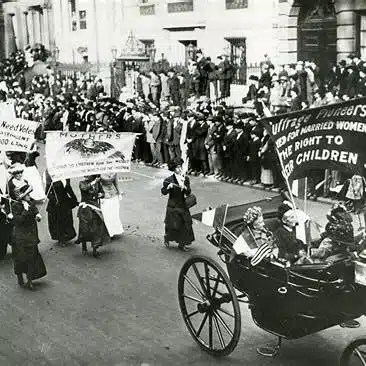 On October 27, 1917, more than 20,000 women marched through the streets of New York City, demanding the right to vote. It was one of the largest suffrage demonstrations the city had ever seen, and it came at a pivotal moment—just days before New York State would hold a referendum on women’s suffrage. Suffragettes knew that if they could win the vote in New York, the most populous and politically influential state in the country, it would be a significant step toward national suffrage.
On October 27, 1917, more than 20,000 women marched through the streets of New York City, demanding the right to vote. It was one of the largest suffrage demonstrations the city had ever seen, and it came at a pivotal moment—just days before New York State would hold a referendum on women’s suffrage. Suffragettes knew that if they could win the vote in New York, the most populous and politically influential state in the country, it would be a significant step toward national suffrage.
But the road to victory was anything but easy.
For decades, women had been heckled, mocked, threatened, and arrested for demanding the vote. Their struggle wasn’t just against politicians who refused to change the law—it was against a deeply ingrained belief that women had no place in politics at all.
And in the final, crucial months before the vote, the backlash became more brutal than ever.
New York was a critical state in the fight for suffrage. Women’s rights activists had been campaigning for the vote since the Seneca Falls Convention in 1848, but for much of the 19th century, progress was slow.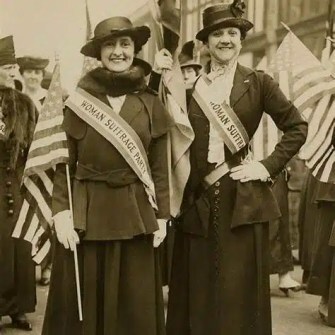
By the early 1900s, suffrage groups had grown more organized and militant. In 1915, a suffrage referendum was put before New York voters—but it failed.
Opponents claimed that women didn’t need or want the vote, and that it would disrupt the social order.
Suffragettes refused to back down. They intensified their efforts, holding mass demonstrations, publishing pamphlets, and lobbying lawmakers. Women from all social classes joined the cause—from wealthy society women like Alva Belmont to working-class activists like Rose Schneiderman.
By 1917, with World War I raging overseas, suffragettes tied their cause to the war effort. Women were working in factories, serving as nurses, and keeping the country running while men fought abroad. They argued: If women could contribute to the nation in war, why couldn’t they vote at home?
As the 1917 referendum approached, tensions were high.
The Consequences of Protest: Arrest, Brutality, and ImprisonmentPeaceful protests weren’t always met with peaceful responses. Women were frequently harassed, assaulted, and arrested by police.
* They were charged with disorderly conduct or obstructing traffic—thin excuses to justify arrests.
* Many were roughed up by police, dragged by their hair, punched, or struck with batons.
* Some suffragettes were sentenced to workhouses or prisons, where conditions were brutal.

One of the most infamous incidents occurred just a few weeks after the October 27, 1917, march in New York:
The Night of Terror: November 14-15, 1917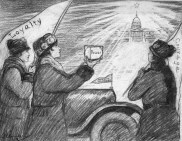 While New York suffragettes were celebrating their victory at the polls on November 6, 1917 (when the state finally granted women the vote), their sisters in Washington, D.C., were facing a nightmare at Occoquan Workhouse.
While New York suffragettes were celebrating their victory at the polls on November 6, 1917 (when the state finally granted women the vote), their sisters in Washington, D.C., were facing a nightmare at Occoquan Workhouse.
On November 14, 1917, 33 women—including Lucy Burns—were arrested for picketing outside the White House. President Woodrow Wilson had long refused to support a federal suffrage amendment, and women known as the Silent Sentinels had been protesting his inaction for months.
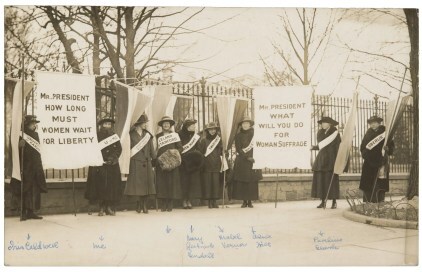
That night, guards at Occoquan Workhouse viciously attacked the prisoners in what became known as the Night of Terror:
* Women were thrown against iron beds, slammed into walls, and kicked.
* Lucy Burns, one of the most outspoken leaders, was chained to her cell door with her arms above her head all night.
* When women went on a hunger strike, they were force-fed through tubes shoved down their throats—a torturous practice that left them bruised and vomiting blood.
The public outcry over their treatment was enormous. Newspapers covered the brutality, and suffrage leaders used it to turn public opinion against the government’s handling of women protesters.
The Final Push for National Suffrage (1918-1920)After New York granted women the right to vote in 1917, the suffrage movement shifted its focus to the federal level.
* In 1918, President Wilson finally endorsed women’s suffrage, partly due to public pressure over the treatment of imprisoned suffragettes.
* The House of Representatives passed the Susan B. Anthony Amendment (what would become the 19th Amendment) in 1918, but the Senate rejected it.
* In 1919, it passed both houses of Congress, and the long battle for state ratification began.
Finally, on August 18, 1920, Tennessee became the 36th state to ratify the 19th Amendment, securing women’s suffrage nationwide.
What Did It Cost?The right to vote was not freely given—it was fought for with courage, sacrifice, and pain.
Women like Lucy Burns, Alice Paul, Ida B. Wells, and thousands of unnamed activists endured arrest, humiliation, and violence to secure a right that many take for granted today.
Even after the 19th Amendment was passed, the fight wasn’t over. Many Black women in the South were still disenfranchised due to racist Jim Crow laws. Native American and Asian American women were also denied voting rights for decades after 1920.
The lesson of the suffrage movement is clear: progress is never inevitable. It must be fought for.
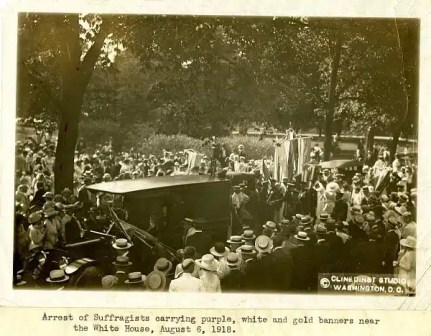 Why This History Matters Today
Why This History Matters TodayThe women of 1917 didn’t just fight for their own rights—they fought for future generations. Their struggle is a reminder that:
* Political change requires persistence. The suffrage movement didn’t succeed overnight. It took decades of relentless activism to win.
* Those in power rarely give it up willingly. The women of 1917 were mocked, jailed, and brutalized because they threatened the status quo.
* We must protect the rights they won. Voting rights remain under attack in many ways today.
The best way to honor these suffragettes is to exercise the right they fought for.
As we remember the events of October 27, 1917, and the brutal aftermath of the Night of Terror, we should ask ourselves: What rights are we willing to fight for today?
The fight for women’s suffrage was never just about voting—it was about power, inclusion, and justice. Women like Lucy Burns and the thousands of suffragettes who marched in New York City paved the way for future generations, but their work isn’t finished.
More than a century later, we still face battles over who gets a voice in democracy. Their story isn’t just history—it’s a call to action.
No right to silence. No right to surrender. The fight continues.
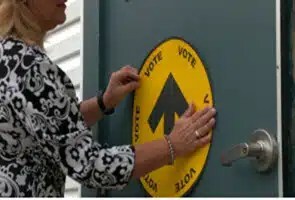
Want More History Brought to Life?
Sign up for my newsletter and get a free short story about Marie Santoro’s courageous march for suffrage in 1917. Experience the passion, the struggle, and the moment that changed everything.
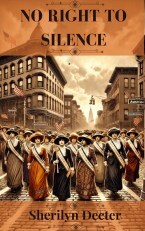
The post Marching into History: How New York Women Fought Their Way to the Ballot Box appeared first on Sherilyn Decter.
January 8, 2025
From Home to the Classroom
 When Standing Up Meant Standing Apart
When Standing Up Meant Standing Apart
Look at her – poised in that sun-drenched classroom, every inch the picture of a proper 1920s teacher. But don’t let the high collar and perfect posture fool you. For women like Lucie Santoro, the hero in Sherilyn’s soon-to-be released novel, choosing the classroom over the kitchen wasn’t just a career choice – it was an act of revolution.
“Education changes people, Lucia,” her mama warned. “It takes them places a mother’s prayers can’t follow.”
Mama wasn’t wrong. But sometimes the most dangerous steps are the ones that lead us exactly where we’re meant to be.
From Home to the Classroom: The Transformative Power of Education in Historical FictionPicture this: A young woman in early 20th century East Harlem, her eyes bright with ambition, clutching a high school diploma in one hand and a dream in the other. Her family sees a future bride and homemaker. She sees a classroom full of eager students, waiting for her to unlock their potential.
Welcome to the world of Lucie Santoro, the feisty heroine of *The Promise*, and buckle up for a journey that’s about to turn the page on traditional expectations!
## Education: The Ultimate Rebel’s ToolkitIn the realm of historical fiction, education isn’t just about books and blackboards. Oh no, it’s the secret weapon our heroines wield to shake up the status quo. It’s the key that unlocks doors, the torch that lights up dark corners of possibility, and sometimes, it’s the metaphorical stick of dynamite that blows societal expectations sky-high!
For our girl Lucie, education is all that and a bag of chips. It’s her ticket to:
– Independence (bye-bye, arranged marriages!)
– Intellectual fulfillment (because there’s more to life than pasta recipes)
– Making a difference (one student at a time)
Imagine graduation day. The air is thick with possibility (and maybe a little mothball scent from those robes). Lucie’s heart is doing the cha-cha of excitement and dread. On one shoulder sits the angel of ambition, whispering of chalk-dusted futures. On the other, the devil of duty, mumbling about wedding bells and cradles.
It’s the ultimate showdown:
– Classroom or Altar?
– Textbooks or Diapers?
– Apples for the teacher or Spaghetti for the family?
Talk about a cliffhanger, folks!
## Sister Agnes: The OG CheerleaderEvery heroine needs a sidekick, and for Lucie, it’s Sister Agnes. Think of her as the Dumbledore to Lucie’s Harry Potter, minus the beard and plus a habit. She’s the one who sees the spark in Lucie’s eyes and fans it into a flame.
Sister Agnes is serving up:
– Encouragement (with a side of tough love)
– Guidance (GPS for the soul, if you will)
– A much-needed reality check (when Lucie’s dreams need a little grounding)
Hold onto your hats, because *The Promise Trilogy* is about to drop a bombshell: women have brains! I know, shocking, right? But in Lucie’s world, this is headline news. She’s riding the wave of a revolution where women are starting to step out of the kitchen and into… well, everywhere else!
World War I is shaking things up, and suddenly:
– Rosie the Riveter is everyone’s new #WCW
– Education for women is becoming less “Why?” and more “Why not?”
– The future is female (but don’t tell the menfolk just yet)
Now, don’t go thinking this is all smooth sailing. Lucie’s path to the classroom is bumpier than a Model T on a cobblestone street. She’s got:
– A mother who thinks “career woman” is code for “old maid”
– A community that raises eyebrows higher than their Sunday hats
– Her own doubts nipping at her heels like a pesky puppy
But does our girl give up? Heck no! She’s got grit, determination, and a vision of a future where she calls the shots.
## Lucie Santoro: Rebel with a CauseIn the end, Lucie’s not just fighting for a job. She’s fighting for:
– The right to define her own success
– A future built on her terms
– The chance to lift up others through education
Her classroom isn’t just a room with desks and a chalkboard. It’s her declaration of independence, her soapbox, her stage. It’s where Lucie Santoro becomes the leading lady of her own life story.
So, dear readers, the next time you crack open a historical fiction novel, keep an eye out for the Lucies of the world. They’re the ones with ink-stained fingers, fire in their eyes, and dreams bigger than their hometown. They’re the ones who remind us that sometimes, the most revolutionary act is simply to learn, to teach, and to never, ever stop questioning the world around us.
Class dismissed!
# Don’t Miss a Moment of Lucie’s Journey!
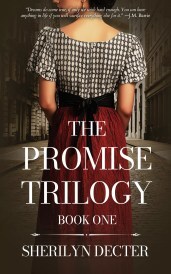 Hey there, fellow time travelers! Ready to be part of something extraordinary? Because let’s be honest – we all know that feeling of wanting to shake things up, of standing at the crossroads between what’s expected and what’s possible. That’s exactly where Lucie Santoro finds herself in 1925, and trust me, you’re going to want a front-row seat for what happens next!
Hey there, fellow time travelers! Ready to be part of something extraordinary? Because let’s be honest – we all know that feeling of wanting to shake things up, of standing at the crossroads between what’s expected and what’s possible. That’s exactly where Lucie Santoro finds herself in 1925, and trust me, you’re going to want a front-row seat for what happens next!
Picture this: Every month, you’ll get an exclusive peek behind the curtain of The Promise Trilogy, including:
–  Behind-the-scenes glimpses of Lucie’s world
Behind-the-scenes glimpses of Lucie’s world
–  Sneak peeks at upcoming chapters- Chapter One of Book One is available now, just email Sherilyn after you subscribe.
Sneak peeks at upcoming chapters- Chapter One of Book One is available now, just email Sherilyn after you subscribe.
–  Hidden historical gems that inspired the story
Hidden historical gems that inspired the story
–  First dibs on becoming a beta reader
First dibs on becoming a beta reader
–  Special subscriber-only content
Special subscriber-only content
–  Free stories and exclusive offers- keep reading to find out how you can get your free copy of Red Sky at Night
Free stories and exclusive offers- keep reading to find out how you can get your free copy of Red Sky at Night
Plus, you’ll be part of a community that gets it – that understands why a young woman in 1925 might trade her mother’s marinara recipe for a piece of chalk and a classroom of possibilities!
Remember, some stories are too good to keep to yourself. Join our newsletter family today and let’s make a little history together!
# But Wait… There’s More! A Special Welcome Gift!
But Wait… There’s More! A Special Welcome Gift!Sign up today and you’ll get an exclusive early peek at Cleo Lythgoe’s story in “Red Sky at Night“!
Picture this: It’s 1932, Prohibition is in full swing, and Cleo Lythgoe is about to learn that running liquor on Rum Row takes more than just guts – it takes moxie! When a storm washes away a mobster’s booze order and pirates are circling like sharks, what’s a girl to do? Especially when the company’s reputation (and maybe her life!) hangs in the balance…

## Why You’ll Love This Story:
–  High-seas adventure
High-seas adventure
–  Prohibition-era drama
Prohibition-era drama
–  Fierce female protagonists
Fierce female protagonists
–  Rum-running excitement
Rum-running excitement
–  And a dash of romance with the legendary Bill McCoy himself!
And a dash of romance with the legendary Bill McCoy himself!
Think “Peaky Blinders” meets “Pirates of the Caribbean” – but with a woman calling the shots!
This full-length story is my gift to you, available immediately when you join our newsletter family. Because let’s face it – who doesn’t love a tale about a woman making waves in a man’s world?
## Double the Drama, Double the Fun!
Follow BOTH Lucie and Cleo’s journeys – from East Harlem classrooms to high-stakes rum running. Two women, two different paths to independence, one amazing adventure!
P.S. Did I mention there are pirates? And mobsters? And a swoon-worthy romance? Just saying… 
 **SIGN UP NOW and get a free novella Red Sky at Night**
**SIGN UP NOW and get a free novella Red Sky at Night** 
P.S. Mama Santoro would definitely not approve of this newsletter… which is exactly why you should subscribe! 
#DareToTeach #HistoricalFiction #WomensStories #ThePromiseTrilogy
#HistoricalFiction #WomenInHistory #1920s #TeacherLife #ItalianAmerican #WomensStories #ComingSoon #ThePromiseTrilogy
How about you? Would you have dared to defy tradition for a dream? 

The post From Home to the Classroom appeared first on Sherilyn Decter.
April 30, 2024
The Culinary Joys Found In The Promise Trilogy
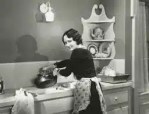 Ciao amici! Bette Hardwick here, whisking you away to the heart of Italian immigrant life in 1918 New York City. Join me as we explore the mouthwatering scenes and savory secrets from Sherilyn’s upcoming novel, “The Promise Trilogy.”
Ciao amici! Bette Hardwick here, whisking you away to the heart of Italian immigrant life in 1918 New York City. Join me as we explore the mouthwatering scenes and savory secrets from Sherilyn’s upcoming novel, “The Promise Trilogy.”
Set against the bustling streets of the Big Apple, this trilogy brings to life the vibrant energy and rich culinary traditions of immigrant families like the Santoros.
Step into Mama Santoro’s kitchen, where the air is thick with the aroma of simmering sauces and freshly baked bread. In this bustling haven, cooking isn’t just a chore – it’s a cherished ritual that binds families together, creating memories that last a lifetime. From the clatter of pots and pans to the laughter of a rambunctious family, every meal is a celebration of love, tradition, and togetherness.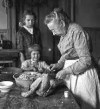
But why is food so important to the Santoros? It’s more than just sustenance; it’s a way of life, a reflection of their history, and a means of preserving tradition. As immigrants far from home, these recipes are time capsules, preserving the flavors and memories of generations past. Each dish tells a story, carrying with it the love and labor of those who came before.
And now, I have a special treat for you straight from the pages of “The Promise Trilogy” – Mama Santoro’s famous Funghi Trifolati recipe. This mouthwatering dish showcases the flavor of mushrooms enhanced with garlic, parsley, olive oil, and sometimes a splash of white wine. It’s a simple yet delicious taste of Italy that’s sure to transport you to Mama’s kitchen with every bite.
Ingredients:
– 500g mixed mushrooms (such as button, cremini, shiitake), cleaned and sliced
– 2 cloves of garlic, minced
– 2 tablespoons olive oil
– 2 tablespoons unsalted butter
– 1 tablespoon fresh parsley, finely chopped
– Salt and pepper to taste
– A splash of white wine (optional)
– Lemon zest (optional)
Instructions:
1. Heat the olive oil and butter in a large skillet over medium heat until the butter is melted.
2. Add the minced garlic to the skillet and sauté for about 1 minute, until fragrant.
3. Add the sliced mushrooms to the skillet. Cook, stirring occasionally, until the mushrooms are tender and browned, about 8-10 minutes.
4. If using, add a splash of white wine to the skillet and cook for another 2-3 minutes, allowing the alcohol to evaporate.
5. Season the mushrooms with salt and pepper to taste. Stir in the chopped parsley and lemon zest, if using.
6. Remove the skillet from heat and serve the Funghi Trifolati hot as a side dish or over pasta.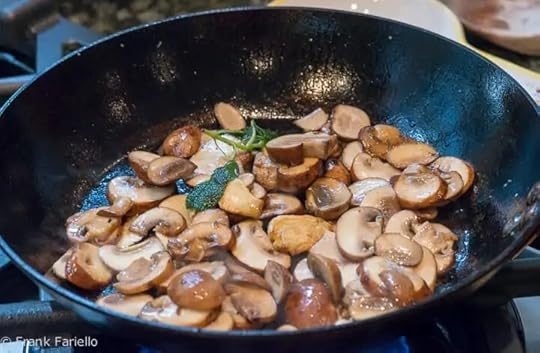
So, grab your apron and get ready to embark on a culinary journey through 1920s Italian heritage. From savory sauces to hearty meatballs, each recipe is a testament to the power of food to bring families together and keep traditions alive. And remember, as Mama always says, “There’s never enough salt.”
Buon appetito! Get ready to savor the flavors and stories woven into every bite of Mama Santoro’s kitchen creations.
The post The Culinary Joys Found In The Promise Trilogy appeared first on Sherilyn Decter.
HOOCHIE COOCHIE HOOCH HAULERS
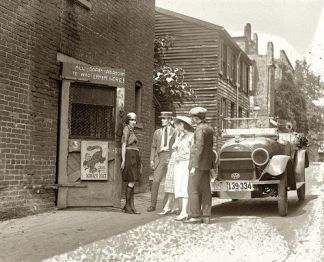
Barely four years into Prohibition, journalist Jack O’Donnell described women bootleggers. They “come from all stations and ranks of life—from the slums of New York’s lower East Side, exclusive homes in California, the pine-clad hills of Tennessee, the wind-swept plains of Texas, the sacred precincts of exclusive Washington. … Some are bold, brainy and beautiful, some hard-boiled and homely, some white, some black, some brown. All are thorns in the sides of Prohibition Enforcement officials.”
Oh, how right he was.
Going into effect in 1920, America’s Eighteenth Amendment prohibited the manufacture, transport, and sale of alcohol in the United States. Lasting thirteen years, this era was commonly known as Prohibition. As soon as it started, so did bootlegging.
It is difficult to quantify how many women participated in bootlegging. However, the number of women arrested under Prohibition laws suggests it was a widespread practice. More women were charged with federal crimes than ever before. A federal prison specifically for women was built in West Virginia in response to the so-called crisis.
Women were so good at bootlegging that prohibition agents of the time estimated that women outsold men five to one.
An opportunity ripe for exploitation:There was a lot of money to be made in selling illegal liquor in the United States during the 1920s. One enterprising woman who owned a boardinghouse in was caught selling alcohol to her patrons. Her record book showed that for the previous few weeks, her salary had averaged $150 per day. In 1924, the average (white male) yearly income in the country was around $1,300, so a woman making that much in two weeks through illegal alcohol production points to a lucrative black market.
Changes in transportation technology during the 1920s boosted women’s access to many new economic and social opportunities, including those around alcohol.
Not many women could drive a team of horses or even had access to them, but a car? Thank you, Henry Ford, for making the automobile available to many more Toms, Dicks, and Harriets. This newfangled invention provided women with the mobility and the means to transport illegal hooch.
A fast car was the most essential piece of equipment for the bootlegger who traveled overland to deliver the goods. Even more than a gun, bootleggers relied on their automobiles. It had to be able to safely haul the hooch over bad roads and rough terrain and outrun the cops.
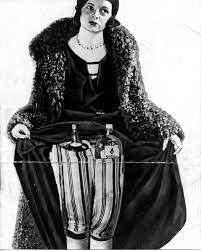 New women’s fashions in the 1920s also lent themselves to clever ways to smuggle alcohol. Feisty dames and flappers with freshly bobbed haircuts could spend their evenings dancing the Charleston in dance halls and speakeasies, sneaking in flasks of liquor on garter belts, under oversized fur coats, or in avant-garde styles of skirts and blouses. And there were few male prohibition agents or cops with the nerve to check what those damsels were wearing underneath.
New women’s fashions in the 1920s also lent themselves to clever ways to smuggle alcohol. Feisty dames and flappers with freshly bobbed haircuts could spend their evenings dancing the Charleston in dance halls and speakeasies, sneaking in flasks of liquor on garter belts, under oversized fur coats, or in avant-garde styles of skirts and blouses. And there were few male prohibition agents or cops with the nerve to check what those damsels were wearing underneath.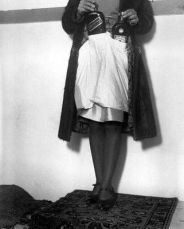
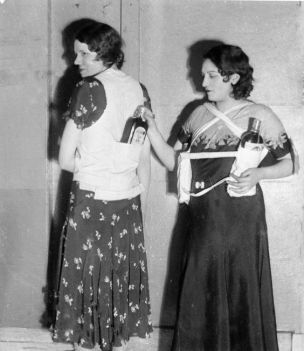
“A painted-up doll was sitting in a corner. . . . She had her arms folded and at our command she stood up. But then came the rub. She laughed at us . . . then defiantly declared to bring suit against anyone who touched her,” an unnamed Ohio “Dry Agent” told the Hamilton Evening Journal in 1924.
Bootleg Queens:While many of female bootleggers were operating on the scale of a home-based business, there were other pistol-packing dames who commanded empires and were known as Bootleg Queens.
“Women rum runners equipped with limousines and daring enough to use guns.”
Every area of the country had at least one bootleg queen.
Maggie Bailey of Clovertown in Harlan County, Kentucky, was the ‘Queen of the Mountain Bootleggers.’ She began bootlegging during Prohibition at age seventeen. The “Queen” lived simply and often gave food and other help to families in need. Because of this, juries often looked kindly on her. A U.S. District judge described her as an expert on search and seizure laws.
Maggie’s title “Queen of the Mountain Bootleggers” was well deserved. Born in the state of Kentucky, she started bootlegging at the age of seventeen. Despite being caught several times, the court never issued a genuinely strict punishment for Bailey.
Hilda StoneIn Western Massachusetts and Vermont, the honor of the title ‘Bootleg Queen’ fell to Hilda Stone. A housewife who earned extra money working as a stenographer, she was known around town as a fashionable woman. With her hair bobbed and a confident smile, she was a popular customer in the local speakeasy.
Initially, it was reported that she turned to a life of crime as a means of survival. Her husband’s lumberyard had fallen on hard times and was close to bankruptcy. The Minneapolis Star ran a large photo of her on its front page, with a story that proclaimed: “Love for her husband and a mad resolve to help him out of a financial squeeze in his lumber business prompted Mrs. Hilda Stone … to abandon housework and a life of respectability and turn bootlegger.”
Hilda decided that the family business needed a cash infusion. Using the family car, she headed north to Canada and began smuggling liquor for the local speakeasy. She was a natural, and it wasn’t long before she had expanded her territory to include Vermont, New Hampshire, even as far away as Boston.
To keep up with demand, she had to increase supply. She modified her car with secret compartments, betters shocks, a souped-up engine, and scattered packages from ladies’ dress shops in Canada across the backseat.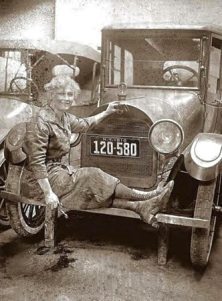
The expanded business also meant she had to hire help. According to border patrol agents, Hilda became the field lieutenant for a gang run out of Greenfield that nicknamed her the “queen of the border rum runners.”
Stone first made headlines in August, 1925, when she pulled a gun on a state trooper during a traffic stop near Jacksonville, Vt. The car, driven by an employee of her husband’s lumberyard, was filled with 174 quarts of illegal hooch they just had smuggled over the border. She made bail and was soon back in business.
Stone was arrested again in September and once again made bail, arrested again in October and once again made bail, and finally was arrested again in December.
However, the December arrest was different. A thorough search of her car revealed the secret compartments, but they were empty. They had to let Hilda go but police seized her car.
Eventually, Hilda Stone served a six-month jail sentence in 1926. But as soon as she was out, she again started running liquor over the border.
Her border-running exploits and arrests were chronicled by newspapers well into 1928. She was quoted as saying “she liked to run liquor across the border for ‘the thrill of it’ and thought it rather fun ‘to be pursued by the border officers’.
Stella BeloumantNevada’s Bootleg Queen was Stella Beloumant and she was responsible for one of the largest bootlegging operations in the state. The size of her operation and her wide-spread notoriety drew the attention of the Federal Government. Eventually, her case warranted an entire task force which included the U.S. Attorney General, the Prohibition Bureau‘s second in command plus two of its agents, and the district attorney. The sheriff’s office put her under 24-hour stakeout.
Her eventual arrest netted 820 gallons of wine or the equivalent to 4,140 bottles.
Gloria de CasaresGloria de Casares was bootlegging wife of a wealthy Argentinean. In 1925, her five-masted ship was preparing to depart from London to the U.S. Officials seized it with 10,000 cases of Scotch. After that, she and her ships were constantly under suspicion of further bootlegging.
Birdie Brown and Josephine Doody’s stories are covered in the Moonshining blog post of the Hooch ‘n Hellraisers series.
Edna GiardEdna Giard married a man she knew was a bootlegger. They moved alcohol for Al Capone from Chicago to states in the upper Mid-West. She loved the money, excitement, and glamor. Once she spent the afternoon with Capone’s wife in Florida playing tennis and having a “great time.”
Willie Carter SharpeWillie Carter Sharpe was a bootlegger in Franklin County, Virginia. She hauled more than 220,000 gallons of moonshine between 1926 and 1931. At her trial, spectators focused on the diamonds in her teeth.
Cleo LythgoeHowever, the greatest female bootlegger was Gertrude “Cleo” Lythgoe, a legitimate licensed liquor wholesaler in Nassau, Bahamas. A majestic-looking woman, Cleo was mistaken for Russian, French and Spanish, but she was American with ties to a British liquor distributor.
When Prohibition became law, she moved to the Bahamas and used her Scotland connections to import the best Scotch. In the Bahamas, this liquor was loaded on the boats of the real Bill McCoy and brought into the U.S. liquor supply.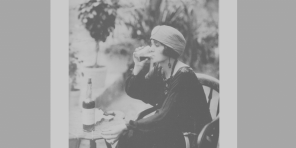
But Cleo eventually moved into commissioning her own boats – that’s where the money was, after all. Bootlegging also came with greater risk.
Cleo became a target of the U.S. authorities and was even stripped searched by a female officer at a port. Like many other so-called Queens of the Bootleggers, Cleo loved the limelight and became a true media darling with newspapers from Jamaica to New York publishing her photo. Men fell in love with her and sent “love letters” to the newspapers. An Englishman, who simply signed “One Who Loves You,” wrote: “I only wish you lived in England. I would marry you, as a home life would be far more suitable for you than your present occupation.”
The Wall Street Journal estimated she was worth more than $1 million, but nobody really knows. Cleo was cryptic and never incriminated herself about her illegal dealings.
I fictionalized Cleo in the Rum Runners’ Chronicles series. She was one of the three legs of the Liquid Gold Triangle, along with Edith Duffy and Spanish Marie.
But they weren’t all queens:Popular media of the time often portrayed bootleggers as mobsters or glamorous speakeasy matrons. While such people existed, most bootlegging happened on a much smaller scale.
For working-class families, selling alcohol provided a necessary second income.
Women were active participants in this home-grown industry. While men were outside the home working, women could manage a liquor enterprise while completing their other at home responsibilities. Some women distilled liquor in their homes on a small scale; others sold liquor acquired through larger smuggling operations.
Esther Clark was a bootlegger in rural Kansas. She stored moonshine in her chicken coop. For this reason, she was the Henhouse Bootlegger.
Because many bootlegging operations were family affairs, children often participated as well. The hero of my Moonshiner Mysteries series started out working in the Bailey bootlegging business, giving Maggie Barnes the ride of her life as they flew along the dark back roads around Philadelphia.
Helen McGonagle Moriarity recalled her role in her mother’s liquor trade, which was cleverly paired with her existing laundry business. Moriarity’s mother, Mary Ann, washed for miners living in a boardinghouse. As a teenager, Helen delivered booze hidden among the clean clothes for “fifty cents a pint and two dollars a gallon.”
The Feminine AdvantageWoman had an advantage over men when it came to moonshining- rum running- bootlegging. For starters, they were much harder to detect and arrest than men simply because it was illegal to search a woman in those days. Women took full advantage of this and actually hid moonshine on their persons; some even taunted law enforcement to search them.
Also in their favor was the fact that juries of the day were loath to convict a woman of the crime of bootlegging. They simply refused to believe that a woman could do such a thing or had the stomach for putting mothers and grandmothers behind bars.
In 1925, a woman in Milwaukee admitted earning $30,000 a year bootlegging. That’s over $400,000 in today’s dollars. The court only fined her $200 and gave her to a month in jail.
Another court sentenced a 22-year-old bootlegger in Denver, Esther Matson, to attend church every Sunday for two years. The President of the U.S. pardoned a Michigan woman bootlegger. Similarly, the governor of Ohio reduced a woman bootlegger’s sentence to only five days.
Police arrested Susie Gallagher Kerr along with two men. She admitted that the still they found was her operation, yet they refused to believe her and convicted the two men instead.
Mobsters and alcohol smuggling syndicates took advantage of these legal loopholes, recruiting women into their ranks and employing them to bootleg liquor.
And even if the gangs didn’t hire women as actual bootleggers, they hired them for ride-alongs. Preferring pretty girls over Plain Janes, the women road along as cover, reducing the chances of getting searched. The word on the street was that no decent federal agent or cop would hold up a car that had women in it.
Women bootleggers tended to keep a lower profile. They were less likely to boast or to become confrontational. And in any conflict with police, they were much less likely to be a target of gunfire.
Other blog posts in the Hooch ‘n Hellraisers series:
Hooch ‘n HellraisersWhiskey WomenQueens of the SpeakeasiesBelle LivingstoneHelen MorganTexas Guinan
2
The post HOOCHIE COOCHIE HOOCH HAULERS appeared first on Sherilyn Decter.
January 24, 2024
Fire and Brimstone: The Butte Mining Disaster of 1917

Hi there- Bette Hardwick here from sometime in the 1920s, Sherilyn’s Gal Friday…
It’s not that I was snooping around on her desk or anything, but that gal is always leaving notes and bits of research she’s doing on her latest book just laying about.
Well, this one just about broke my heart. Of all the ways we can imagine meeting our doom, few of them strike as much terror into the heart as the horror of being buried alive. That prospect haunted the hard rock miners of Butte, Montana, every time they climbed into the small cages, called “skips,” that plunged them down, nearly at freefall, to daily drudgery in the dark bowels of the Butte Hill. But surely the reality of being trapped underground in a race against death must exceed all our powers of imagination.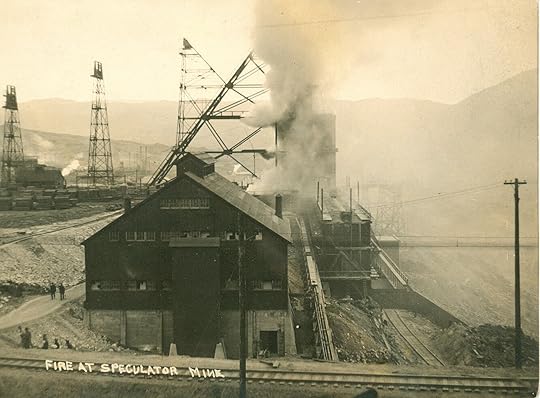
Before the disaster struck, Butte, Montana, was a volatile powder keg of social and political tensions. The year was 1917, and the town was marked by antiwar protests, an oppressive corporate master, simmering labor unrest, divisive ethnic conflicts, and radicalism from both the left and the right. It was a place where a spark was all that was needed to ignite the explosive mix of discontent. Tragically, that spark would come in the form of a devastating mine fire, setting off a chain of events that would rock the nation.
The Fateful Night of June 8, 1917: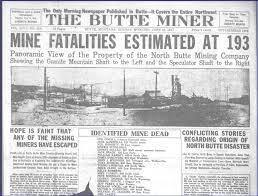 The worst hard-rock mining catastrophe in American history unfolded just before midnight on June 8, 1917. It all began with a tragic accident more than two thousand feet below ground in the Granite Mountain shaft at the Spectator Mine.
The worst hard-rock mining catastrophe in American history unfolded just before midnight on June 8, 1917. It all began with a tragic accident more than two thousand feet below ground in the Granite Mountain shaft at the Spectator Mine.
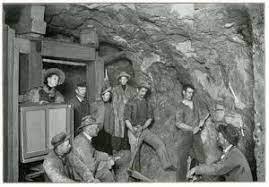
The accident sparked a fire that quickly unleashed flames, smoke, and poisonous gas throughout the intricate network of underground tunnels. In just one hour, over four hundred brave men found themselves trapped in a life-and-death struggle. Within three days, one hundred and sixty-three of them would lose their lives.
Families in Agony:
While the miners fought desperately to survive beneath the earth’s surface, their families faced unimaginable agony above ground. The disaster left wives, children, and loved ones anxiously awaiting news of their husbands, fathers, and friends. The Butte Mining Disaster not only claimed the lives of miners but also left a scar on the hearts of the entire community.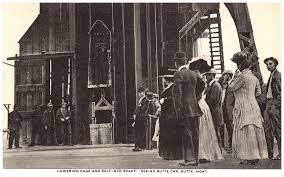
And the tragedy of Butte wrapped its fingers around Sherilyn’s heart and tugged hard.
The Butte Mining Disaster of 1917 was not only a pivotal moment in the history of Butte, Montana, it inspired the backstory of one of Sherilyn’s fictional characters, Sheriff Sam Brown who is featured in several of her novels, including “Whiskey Wars“ and “Stamp Mill Murder.”
Sherilyn used the raw emotion of the disaster to forge Sam’s unwavering integrity, passionate commitment to his community, and a deep distrust of politicians and corporate interests. The disaster also revealed his depth of compassion and empathy, qualities that nearly consumed him during the subsequent Butte riots and strike that followed the fire.
If you’re interested in learning more, Sherilyn recommends Michael Punke’s excellent book Fire and Brimstone. Or for a quicker read, https://bigskyjournal.com/granite-mountain-speculator-mine-disaster/ has a gripping summary of the tragedy.
The post Fire and Brimstone: The Butte Mining Disaster of 1917 appeared first on Sherilyn Decter.
February 22, 2023
Virginia City- from ghost town to tourist mecca
For the third book of the Moonshiner Mystery series, Soiled Dove Murder, Delores and Lucy answer a call for help from a former student and travel to Virginia City, Montana. This moved the story from the usual series setting of Pony Gulch to Virginia City. It was an interesting research challenge because of course, Virginia City exists, and I had to slip my story into a real place that I had never been to. Thank goodness for the internet and books.
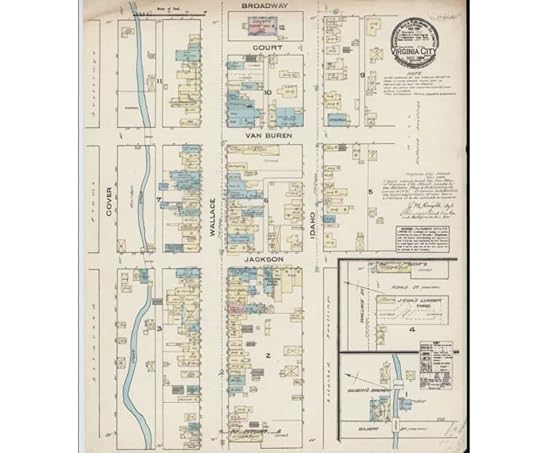
I spent many hours wandering up and down the streets on this map, looking for locations, checking archival photos for descriptions. At times, I felt I knew it better than my own hometown.
Virginia City is a town in and the county seat of Madison County, Montana, United States. In 1961 the town and the surrounding area were designated a National Historic Landmark District, the Virginia City Historic District. The population was 219 at the 2020 census.
It is Montana’s oldest incorporated community. Seemingly frozen in time, it is an outstanding example of a traditional gold mining community of Montana’s “Wild West” Era. It provides an exceptional sample of commercial architecture of the mid-19th century, and the surrounding landscape has been disturbed very little since the mining era ended in 1942.
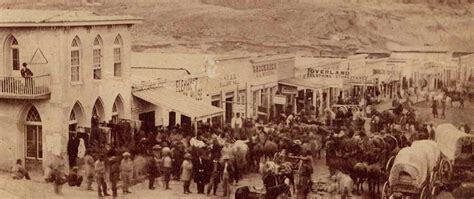
Virginia City is known by many different slogans “Come experience where Montana’s history lives” and “The Magnetic Heart of Montana”, and “People Say We’re Old Fashioned. We Hope So” are three of my favorites and settled a lot of responsibilities onto my shoulders.
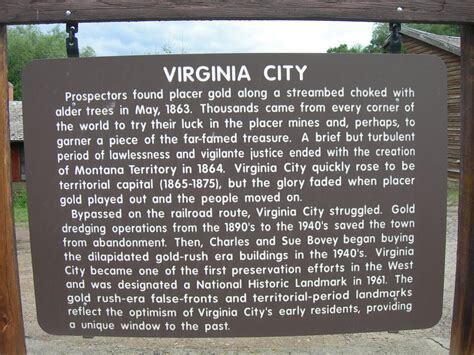
Video VIRGINIA CITY – WHERE HISTORY LIVES!
Part 1: https://youtu.be/Bv854IgTVxo
Part 2: https://www.youtube.com/watch?v=yvo7r...
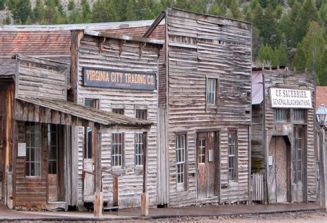 During its gold rush heyday, Virginia City was home to over 30,000 people. As gold discoveries dwindled or became too expensive to extract, the miners and speculators began to abandon the town. The next blow came when the railroad chose not to run a line to Virginia City. The decision to locate the state capital in Helena was a final straw and the town began to die a not-so-slow death. By the 1940s, only about 100 people were left to call Virginia City home.
During its gold rush heyday, Virginia City was home to over 30,000 people. As gold discoveries dwindled or became too expensive to extract, the miners and speculators began to abandon the town. The next blow came when the railroad chose not to run a line to Virginia City. The decision to locate the state capital in Helena was a final straw and the town began to die a not-so-slow death. By the 1940s, only about 100 people were left to call Virginia City home.
During the Forties, Charles and Sue Bovey, a wealthy couple fascinated by history, bought up most of the old, abandoned buildings in town and began to put much needed maintenance into the failing structures. 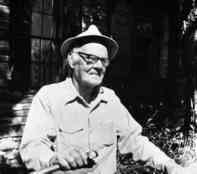
It was a love affair that grew into the first major, privately funded preservation program in the nation. The work they did was of monumental proportions and has preserved Virginia City’s 1860s look.
Today, Virginia City is an open-air museum complete with artifacts and living history enactments. Buildings in their original condition with Old West period displays and information plaques stand next to presently active restaurants, gift shops, and other businesses.
Nearly all of the town’s buildings are original with none brought in from elsewhere. Of the nearly three hundred structures in town, almost half were built prior to 1900. The entire town received National Historic Landmark status in 1962, and many of its buildings have been added to the National Register of Historic Places.
In addition to saving many of the original buildings, the Bovey efforts also provided much needed employment for the area. There were construction, restoration, and preservation efforts as well as entertainment and re-enactment opportunities for actors.
The Bovey’s opened several retail venues including the Fairweather Inn (which was originally the notorious Anaconda Hotel and was used as a setting in the Soiled Dove Murder), the Opera House for old fashioned variety performances, and the Bale of Hay Saloon. These initiatives brought in much needed restoration of the buildings.
“The Bovey family spent its own money and raised funds to restore Virginia City, then largely abandoned and in decay, to its appearance during the years the town served as a major western mining center and the territorial capital of Montana.
Like the Williamsburg restoration, which focuses on one key story—the revolution—in its depiction of history, the Virginia City restoration also showcased one dramatic event—the vigilante movement for law and order of the late 1860s.
Success at Virginia City led the restoration managers to expand their exhibits to the neighboring “ghost town” of Nevada City, where they combined the few remaining original structures with historic buildings moved from several Montana locations to create a “typical” frontier town.” Carroll Van West
The Boveys not only collected and restored buildings in the mid-20th century, they also packed them with “things”–and many of these are very valuable artifacts of the territorial through early statehood era. The collection of period furnishings, equipment, and inventory now number over a million items including 300 pairs of shoes that had never been out of the box for the shoe store. T is a monumental ongoing task to catalogue it all.
Charlie Bovey also put in the narrow gage short-line railroad between Nevada City and Virginia City. The only railroad to ever come to Virginia City.
 A stunning, authentically restored 1910 No. 12 Baldwin steam locomotive trundles the scant 1.5 miles on the Alder Gulch Short Line to Nevada City. Operated on weekends by volunteer engineers, this mechanical work of art adds to the pioneer town atmosphere and attracts train buffs of all ages. The sound of the steam being released and the whistle blowing always causes excitement. During the week, a gasoline-powered engine moves the cars. Much of the credit for the success of the railroad goes to John Larkin of Michigan.
A stunning, authentically restored 1910 No. 12 Baldwin steam locomotive trundles the scant 1.5 miles on the Alder Gulch Short Line to Nevada City. Operated on weekends by volunteer engineers, this mechanical work of art adds to the pioneer town atmosphere and attracts train buffs of all ages. The sound of the steam being released and the whistle blowing always causes excitement. During the week, a gasoline-powered engine moves the cars. Much of the credit for the success of the railroad goes to John Larkin of Michigan.
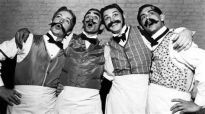 Heritage preservation is an incredibly expensive undertaking and champions like the Bovey’s don’t come around often. Desperate to save their unique town, heirs of the Bovey family and residents of Virginia City cast about for a solution that would guarantee the future of Virginia City and Nevada City.
Heritage preservation is an incredibly expensive undertaking and champions like the Bovey’s don’t come around often. Desperate to save their unique town, heirs of the Bovey family and residents of Virginia City cast about for a solution that would guarantee the future of Virginia City and Nevada City.
 The National Park Service (NPS) considered adding the town to its system, conducting studies in 1937, 1980 and 1995. In the end, the State of Montana through the Heritage Commission, purchased the Bovey assets in Virginia City and Nevada City in 1997.
The National Park Service (NPS) considered adding the town to its system, conducting studies in 1937, 1980 and 1995. In the end, the State of Montana through the Heritage Commission, purchased the Bovey assets in Virginia City and Nevada City in 1997.
In acquiring approximately 250 buildings and over a million artifacts, Montana also acquired an enormous backlog of preservation needs. The job of preserving and continuing the restoration is now in the hands of the Montana Heritage Commission, a branch of the Montana Historical Society.
The Historic District of Virginia City and Nevada City is operated by the Montana Heritage Commission with financial and technical assistance from the NPS. The commission operates gold panning, the Nevada City Music Hall and Museum, and the Alder Gulch Railroad.
Funding for the extensive preservation projects is largely supported through operating revenue and private donations.
While the mix of state-owned properties and privately owned properties creates vitality and provides livelihood to the people of Virginia City, there is always dynamic tension and compromise between entertainment and historical accuracy.
The lure of exploring one of the cradles of Montana history makes Alder Gulch a place well worth spending several days in. Its physical setting between the Tobacco Root Mountains and Gravelly Range are an added attraction.
Today, Virginia City is one of Montana’s most popular heritage tourism destinations. More than 70,000 visitors come annually, generating millions in local revenue. Most visitors come during the summer, but the community is working to extend its commitment to heritage tourism to other seasons.
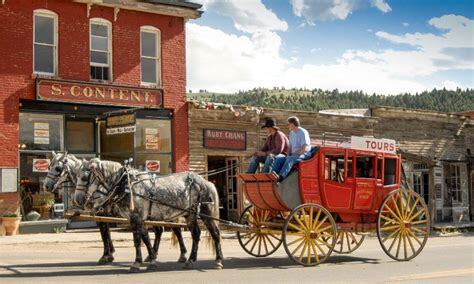
The post Virginia City- from ghost town to tourist mecca appeared first on Sherilyn Decter.
January 24, 2023
Virginia City’s Joss Temple
Many of the action scenes in Soiled Dove Murder, the third book of the Moonshiner series, take place in the joss temple in Virginia City. This was an actual building and the heart of the Virginia City’s Chinatown. On various historical maps and documents, it was listed as the Chinese Masonic Lodge, Chinese temple, or Joss House and was located at the west end of Wallace Street. Best estimates are that it was constructed in the 1860s and remained intact until 1939 when the state highway department demolished the building in order to change the angle of the turn where the highway enters town.
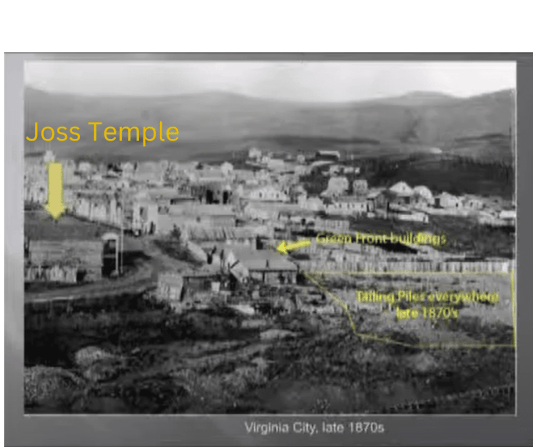
The term “joss” is based on a corruption of the Portuguese word Deos, meaning God and was used to refer to any kind of traditional Buddhist or Daoist (Taoist) temple. It is likely that the Chinese residents of Virginia City practiced an eclectic mix of Confucianism, Taoism, and local folk traditions from the Canton region of China where many of the immigrants were from.
But unlike a Western church, a joss house was not solely a religious edifice. It was also a combined social hall, fraternity house and travelers hostel. was the focus for social and religious activities in the community.
The building was known by Euro-American residents as the joss house, the term “joss” referring generically to the presumptive Chinese deity and also to the incense sticks burned in religious rituals, as well as joss paper which includes sacrificial paper money, paper funerary goods, printed paper charms, etc.
Like those in other Chinese communities of the American West, the joss house in Virginia City was likely built by subscription, with each member of the Chinese community contributing in some way to the temple’s construction, decoration and furnishing.
“The new joss house has been fitted out at a cost of about $2,000. Eight rooms in all compromise the part of the building devoted to the use of the order. Of these, seven are for transient guests of the society, the other being a lounging place as well as one of worship.” The Chinese Joss House Museum, in Evanston, Wyoming
The joss house in Virginia City may have picked up the Chinese Masonic Lodge identity because these temples were not operated by religious institutions and almost all were owned and operated by various community organizations. Often the largest temples were operated by different district associations, while other temples were run by secret fraternal organizations or various other associations organized around clan lineages or trades.
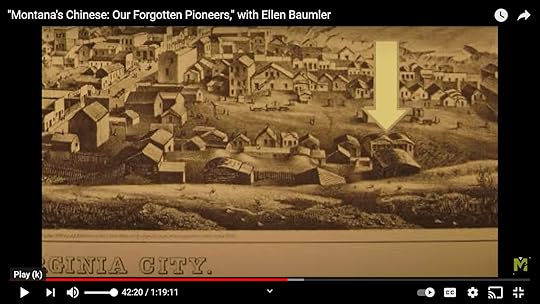
You’ll notice in this old Virginia City postcard, the joss house is not located next to Big Pete’s shoe store, as was described in the novel. Another fictionalization.
There was no priest or religious leader, but one resident of Chinatown was selected each year as the “Keeper of the Joss House.” His responsibilities were to keep the building in order and stocked with whatever supplies were needed. Readers of Soiled Dove Murder will recall the fictional temple guardian character that Lucy had to deal with on several occasions.
As mentioned, as an author of historical fiction, I often have to weave a fictionalized story on limited factual information. 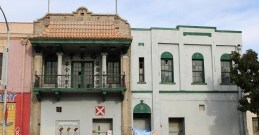 Such was the case in Soiled Dove Murder where I portrayed Virginia City’s joss house being operated by the local tong. This came about because of research on the Bow on Tong Joss House in Fresno. Although tong associations carried a negative stigma because of their close ties with organized crime, joss houses functioned as social centers for the whole community. The Bow on Tong Joss house pictured represented a large number of Fresno’s Chinese and according to newspaper articles the opening of the building was a cause for great celebration.
Such was the case in Soiled Dove Murder where I portrayed Virginia City’s joss house being operated by the local tong. This came about because of research on the Bow on Tong Joss House in Fresno. Although tong associations carried a negative stigma because of their close ties with organized crime, joss houses functioned as social centers for the whole community. The Bow on Tong Joss house pictured represented a large number of Fresno’s Chinese and according to newspaper articles the opening of the building was a cause for great celebration.
The joss house often served multiple purposes. It Virginia City, it has been described as the home of the Chinese Masonic Lodge, which was a fraternal society that reinforced Chinese social and cultural values, taking the place of the family for these single men.
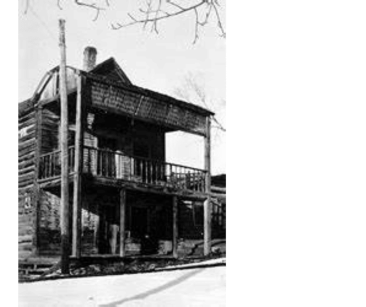
A banner hanging inside listed 21 rules that the men had to abide by, including avoidance of fighting in public and not coveting someone’s wife or sister for her beauty. These rules seem to indicate the Chinese were trying to maintain order in their community; this might have been part of an effort to prevent trouble with the surrounding community, which were already prejudiced against them.
While there are archival references from newspapers and other anecdotal references to the Joss temple in Virgina City, they have not been verified by historians, anthropologists, or archaeologists and are colored by the suspicions and biases of their times.
These recollections mention the temple being on the second floor of the lodge. Newspaper references from the time describe the ground floor as an opium den filled with booths for lying down and smoking. The temple and lodge also served as a fraternity house, a brothel, and a gambling house for all the Alder Gulch Chinese.
In 2000, an excavation took place on the south side of Highway 287, near the Chinese temple location. The university crew excavated one unit (Unit 28) trying to find features or artifacts related to the temple, knowing that this could be problematic because of the past highway construction. No identifiable Chinese related artifacts were found, but the old boardwalk that can be seen in historical photographs running in front of the Chinese Temple was located.
The majority of these structures were wooden and fire demolished many of them. As well, the Chinese populations in these frontier mining and railroad communities dwindled away over time. There are turn of the century references to a third of the population in Virginia City being Chinese, however census records from 1930 show only one Chinese person remained in the ghost town.
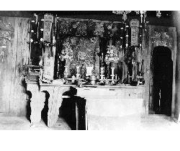 I was able to locate a rare interior photograph of Virginia City’s joss house. It shows an altar constructed in characteristic layers, as well as elements commonly found in Chinese temples include lanterns, tapestries, peacock feathers (above the altar), candles and artificial altar flowers, incense burners, and joss sticks (center).
I was able to locate a rare interior photograph of Virginia City’s joss house. It shows an altar constructed in characteristic layers, as well as elements commonly found in Chinese temples include lanterns, tapestries, peacock feathers (above the altar), candles and artificial altar flowers, incense burners, and joss sticks (center).
The academic thesis The Chinese Presence in Virginia City Montana has a fascinating description of Virginia City’s joss temple.
I was also able to find a beautiful image from the Joss House in Butte, Montana.
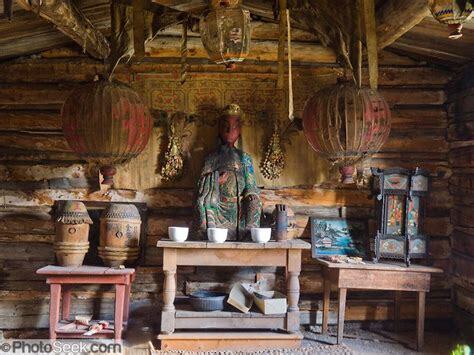 Weaverville Joss House
Weaverville Joss House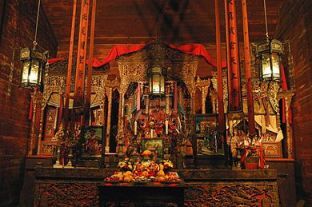 Weaverville Joss House, also known as the Temple of the Forest Beneath the Clouds, is one of three old Chinese temples that still survive in Northern California, USA.
Weaverville Joss House, also known as the Temple of the Forest Beneath the Clouds, is one of three old Chinese temples that still survive in Northern California, USA.
Weaverville’s original Chinese community disappeared because of dwindling prospects of finding gold, amid other factors, to shrink from 2,500 in its heyday to a mere 16 persons by 1931. The original temple management committee dwindled to just a single caretaker.
Overtime, fire, vandalism, and burglaries threatened the abandoned structure. The citizens of Weaverville realized the temple must be preserved, for the joss house was a link with the history of all the area’s pioneers, regardless of their origin. It was more than simply a domestic matter for the Chinese community and eventually became part of California’s State Historic Park system.
In the front porch a “spirit screen” serves to prevent evil spirits from entering. According to Chinese belief evil spirits can only proceed in a straight line. The spirit screen foils any attempt to enter and so keeps the temple safe from harm. A similar screen is mentioned in Soiled Dove Murder.
Along the wall are ranged four colorful processional banners. The temple’s central altar, the Altar of Wealth, is dedicated to the gods Kuan Ti and Bok Ai. The left-hand altar is dedicated to Cling Loy Goon, Toy Sing Goon and Uah Poe, all gods of good health, and the right-hand altar to Kuan Yin and Leong Mar, goddesses who protect women and children.
For more information about the Weaverville temple, check out An Historic Chinese Temple in California
ABC also did an amazing video. It’s worth a watch, although you do have to wait through the advertisements at the front end. Sorry, my technical skills can’t figure out how to embed it without the ads.
The Chinese Joss House Museum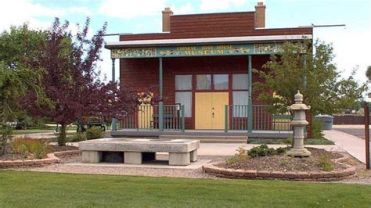 The Chinese Joss House Museum in Evanston, Wyoming tells the story of Chinese immigrants who lived and worked in Uinta County from the 1870s through the 1930s. It is a replica of a Chinese temple constructed in Evanston in 1874.
The Chinese Joss House Museum in Evanston, Wyoming tells the story of Chinese immigrants who lived and worked in Uinta County from the 1870s through the 1930s. It is a replica of a Chinese temple constructed in Evanston in 1874.
Although the Chinese Joss House Museum is in a different location than its predecessor, its distinctive architectural features bear witness to the nineteenth-century Chinese immigrants in the community. The Joss House is operated by the Uinta County Museum (1020 Front Street). Inquire at the museum for access.
In 1898, two 8-foot-tall carved wooden panels were installed on the front of the original building, flanking the front door. The panels were inscribed with the names of those who had donated money for their creation and installation, along with traditional Chinese symbols for good fortune and prosperity. The panels were fabricated in San Francisco from fragrant Port Orford cedar, which grows only in coastal areas of northern California and southern Oregon.
After the notorious Chinese massacre in Rock Springs in 1885, coupled with national exclusionary legislation, the Chinese population in Evanston steeply declined; by 1920, there were fewer than a dozen residents remaining in Chinatown. In January 1922, the Union Pacific Railroad, which owned the land where Chinatown had been built, forced the Chinese to vacate the Joss House. Shortly afterward, the building burned to the ground. There may have been some prior quiet intimations of the fire, because several residents of Evanston managed to salvage some of its furnishings, including the carved panels from the front of the building, before the fire broke out.
Sixty-eight years later, in 1990, Wyoming celebrated its centennial with community-based “Lasting Legacy” projects, with Evanston choosing to build a replica of the Joss House in Depot Square, the downtown civic plaza. The replica, which was based on historic photos of the original, is a 35 x 35-foot, single-story, stained wood structure. Like the original building, windows flank its front door and a shallow front porch runs the length of the facade.
The new Joss House was built to serve as a museum telling the story of the Chinese in southwestern Wyoming, and Evanston in particular. Its most treasured artifacts are the carved wooden panels that were rescued from the original Joss House, and later donated to the Wyoming State Museum.
The panels rescued from the fire were eventually given to the City of Evanston and are displayed inside the building. Also on display are a model of Evanston’s Chinatown, based on Sanborn Fire Insurance maps from 1910, and a small collection of artifacts, including a few items salvaged from the 1922 fire and others from a Chinatown archaeological excavation in the 1990s.
The museum collection also includes a carved decorative panel from the interior of the building, and a wooden sign from the original structure that names the building “the East Road Dwelling Place”—which hints at its role as a hotel on the railroad, known to the Chinese immigrants as the “east road” because it led east from their landing point in California.
For more information on the Evanston Museum check out Chinese Joss House Museum. Society of Architectural Historians
I love the research that goes into writing historical fiction and hope this article and others on the blog show both the historic facts and their inspiration are woven together in my novels. Sherilyn
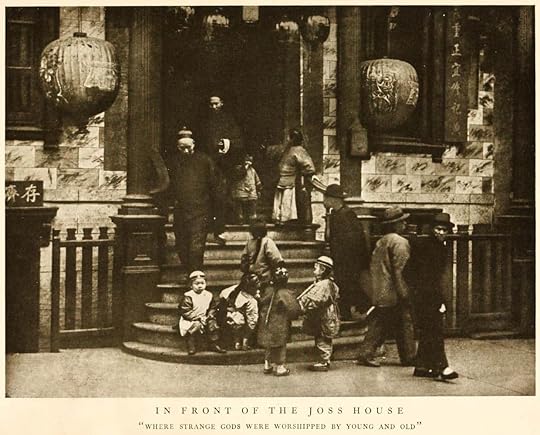
Image “Where strange gods worshiped- Photo of front steps of a joss temple in San Francisco, photo by Arthur Genthe, from his Old Chinatown collection (1912)
Interested in the other blog posts related to Soiled Dove Murders, book four of the Moonshiner Mysteries series?
Chinese Prostitution in the American West
The post Virginia City’s Joss Temple appeared first on Sherilyn Decter.
January 10, 2023
Chinese Prostitution in America’s West
Writing historical fiction isn’t an easy task—there’s research, there’s confronting uncomfortable truths, and there’s also the need to make the past accessible and immediate. All of these issues were front and center while I was writing Soiled Dove Murder, the third book in the Moonshiner Mysteries series. The plot of this novel centers on the disappearance of a Chinese prostitute and my research into the women known as Daughters of Joy or sing-song girls was challenging.
Few women were in the first wave of Chinese immigrants to America in the mid-nineteenth century. For example, in 1850, there were only 7 Chinese women versus 4018 Chinese men in San Francisco and in 1855, women constituted only two percent of the total Chinese population in America.
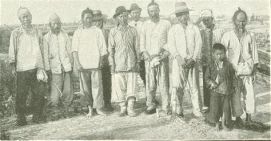
These skewed male to female ratios in the Chinese community led many of the men to seek sexual release in brothel houses, which became a lucrative business opportunity and an aggressive expansion of the number of Chinese women in America’s west.
Sadly, these women and young girls were not brought over from China to become brides. Rather, prostitution was so rampant that in 1870 census manuscripts, 61 percent of the 3536 Chinese women in California had their occupations listed as prostitution.
Yellow SlaveryChinese secret societies known as the “tongs” oversaw prostitution from the beginning. Tongs offered protection and opportunity to new arrivals, and were also notorious criminal enterprises.
To furnish the burgeoning sex trade, its members kidnapped and bought Chinese girls. Business proved highly lucrative; it was easy to make 850 dollars a year off even a low grade prostitute. With their profits the tongs were able to extend their power, dominate immigrant neighborhoods and further expand the sex trade and other criminal activities.
In most of the cases the prostitutes were not there by choice. Many of these women were lured to America under false pretenses or sold by their impoverished families and some cases they were abducted.
Although some girls were kidnapped in China by bandits during such political upheavals as the mid-century Opium Wars and the 1850–64 Taiping Rebellion, other girls were sold into bondage by their own families. As daughters in Chinese households could neither furnish the hard manual labor required to support the family nor carry on the ancestral name, they were considered inferior to sons. Their inferior status in Chinese society at the time made them expendable, thus it was acceptable to dispose of them as circumstances warranted.
While a girl sold into prostitution in China might fetch as little as $50, one sold overseas was worth thousands of dollars, once under control of the tongs. Families facing economic hardship and starvation often made the decision to sell their daughters abroad in hopes of giving them the chance at a better life.
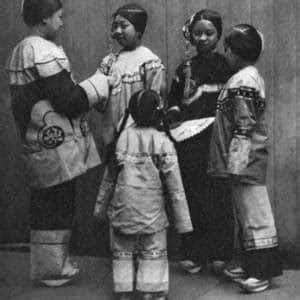
Most girls in such circumstances accepted their family’s decision out of filial loyalty and allowed themselves to be sold to “labor contractors” in China.
On arrival in San Francisco the young women were confined in holding pens called barracoons (from the Catalan word barraca, or “hut”), a practice originating with the African slave trade. The women purchased for tong brothels while still in China were handed over to their owners; those not yet sold were put up for auction.
Those women were literally sold at auction in the 1860s and the 1870s on the wharf of San Francisco. Later on, those sales started to go underground, but the trafficking of women for sex slavery, for forced prostitution, continued into the early 20th century. It continues today, but not in the way you would see hundreds of women coming off ships and being sold.
Daughters of JoyThe nature of Chinese prostitutes’ work differed from the prostitutes who worked in high class brothels where they were decked up in silk and satin and displayed for the men to choose from. The majority of Chinese women arriving on America’s west coast were destined to work in cribs on the streets where they were treated like virtual slaves.
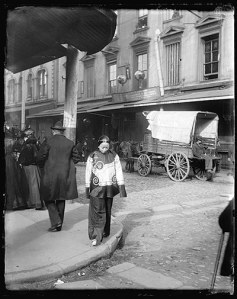
Life for these women was abusive and often short. Most often the women became drug users to escape from their sordid reality or in other cases were beaten to death or were victims of venereal diseases.
On meeting their owners, the Chinese women, though often illiterate, were forced to sign papers that contracted them as prostitutes for four to six years. Some of the more attractive girls were “lucky” enough to become the concubines of wealthy owners, who might treat them decently, although if they failed to please, their masters could return them to the auction block.
Others ended up in high-class brothels reserved for Chinese men, where they might also receive better treatment.
But most of the girls wound up in “cribs”—shacks frequented by sailors, teen boys, day laborers and drunks, Chinese and white alike, who paid less than a half-day’s wages (25 to 50 cents) for their services.
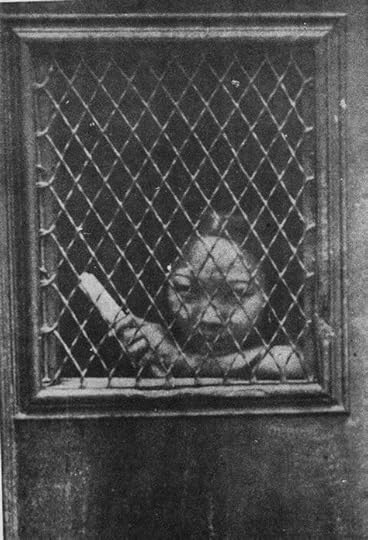
Conditions in the cribs were brutal. Often mistreated by customers, the indentured girls received little care and no medical attention. Homesick and left untreated for venereal disease or other illnesses, most women were broken within a few years and rarely lasted more than five or six years in bondage. Some who started when they were 14 years old were dead before they reached 20, according to Chinese academics Yung and Lucie Cheng and the reportage of Gary Kamiya based on stories in the San Francisco Chronicle archives.
In Soiled Dove Murder, the third book in the Moonshiner Mystery series, ‘the hospital’ is based on research. A dreadful ritual took place when a Chinese prostitute could not earn her keep. “When any of the unfortunate harlots is no longer useful, and a Chinese physician passes his opinion that her disease is incurable, she is notified that she must die,” the San Francisco Chronicle reported in 1869.
The condemned was taken to a “hospital”—a dismal, windowless, unfurnished room in a Chinatown back alley. “A cup of water, another of boiled rice and a little metal oil lamp are placed by her side,” the Chronicle article continued. The proprietors then locked the heavy door. Days later, when the lamp had burned out, her executioners entered to remove the woman, who was usually dead from starvation or by suicide.
White Devil’s DaughtersMotivated by their Christian faith, a group of white women set out to offer the Chinese immigrant women a path out of slavery and sex trafficking and, ideally, into what they viewed as good Christian marriages. In 1874, they founded the Occidental Board Presbyterian Mission House and, for the next six decades, more than 2,000 women passed through the doors of the brick building at 920 Sacramento Street, San Francisco.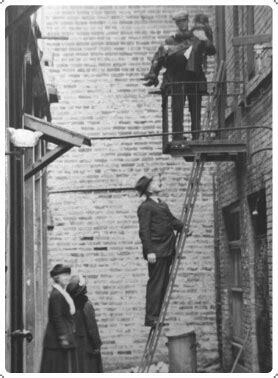
In most circumstances, the Chinese Daughters of Joy had to be rescued from their ‘places of work’.
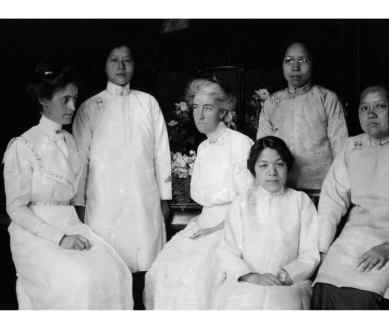 image Tien Fuh Wu (standing in the back, on the left) and Donaldina Cameron (seated, center) with a group of women who may have been Mission Home staffers. Courtesy of Louis B. Stellman, California State Library
image Tien Fuh Wu (standing in the back, on the left) and Donaldina Cameron (seated, center) with a group of women who may have been Mission Home staffers. Courtesy of Louis B. Stellman, California State Library
If you would like to read more about Chinese prostitution during the gold rush, there are several excellent sources I consulted during the writing of Soiled Dove Murder.
White Devil’s Daughters
Early Chinese Prostitution
China’s Lost Women in the Far West
Daughters of Joy, Sisters of Misery
Poker Bride
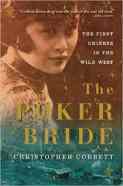
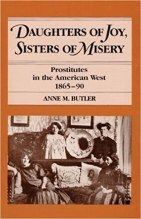
The post Chinese Prostitution in America’s West appeared first on Sherilyn Decter.
December 7, 2022
Shanghai Tunnels- Urban Myth or Fact?
Writing historical fiction is often an intriguing blend of fact and fantasy. While researching Soiled Dove- the third book in the Moonshiner Mysteries series, I came across multiple intriguing references to Chinese (or Shanghai) tunnels in communities in America’s West that had large Chinese populations at the turn of the century.
I tried to chase down as many ‘historical’ and archeological references to these Chinese tunnels as possible. However, in many cases, the tunnel stories were like smoke.
“When you try to contain them and see what substance they have, they just curl through your fingers and disappear.”
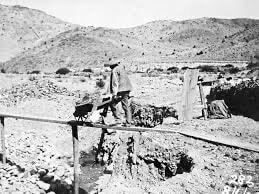 The tunnels captured my imagination because they were evocative of the ghostly nature of the historical Chinese presence in Montana, where the Moonshiner series is set. Once a significant component in many turn of the century mining and railroad communities; by the 1930s when the gold had ran out, many of the Chinese had pulled up stakes and left Montana. All that remains of these early Chinese in Montana are a handful of artifacts and stories of Chinese tunnels and the opium trade.
The tunnels captured my imagination because they were evocative of the ghostly nature of the historical Chinese presence in Montana, where the Moonshiner series is set. Once a significant component in many turn of the century mining and railroad communities; by the 1930s when the gold had ran out, many of the Chinese had pulled up stakes and left Montana. All that remains of these early Chinese in Montana are a handful of artifacts and stories of Chinese tunnels and the opium trade.
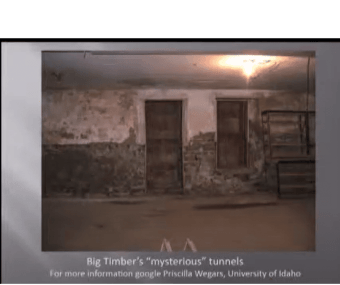 Harve, Butte, Helena, Blackfoot City, Bozeman, Big Timber, Missoula, Billings, and even Virginia City have all laid claim to Chinese tunnels.
Harve, Butte, Helena, Blackfoot City, Bozeman, Big Timber, Missoula, Billings, and even Virginia City have all laid claim to Chinese tunnels.
According to Priscilla Wegars of the University of Idaho, a foremost authority on Asian culture in the West, there is overwhelming evidence that “Chinese tunnels” are nothing more than myths.
Not a single “Chinese tunnel” has ever been identified.
While it is true that Chinese businesses, opium dens, and even living quarters are sometimes found in basement spaces, these in no way can be called “tunnels.”
The Chinese were often targets of discrimination, but they did not live underground because of persecution, as many believe. Basements were simply cheaper to rent than rooms above ground. Further, the basements of nineteenth- and early-twentieth-century business blocks frequently had arched doorways leading to sidewalk vaults. These were storage or delivery areas. Lit by glass blocks turned purple with age, these mysterious vaults had nothing to do with the Chinese.
Tunnel systems beneath downtown areas in Helena, Butte, Missoula, Bozeman, and elsewhere do exist; they served as steam-heat delivery systems. While sometimes steam tunnels served clandestine purposes, particularly for alcohol delivery during Prohibition, these passageways cannot be termed “Chinese tunnels.” Finally, in all settlements where mining was extensive, hand-dug tunnels often remain beneath residential neighborhoods and downtown business areas. Miners of all ethnic groups dug tunnels, and there is nothing that makes a tunnel exclusively Chinese.
The myth of Chinese tunnels continues to be perpetuated despite overwhelming evidence to the contrary. For the most authoritative debunking of this tale, see David Chuenyan Lai, The Forbidden City within Victoria, Victoria, BC: Orca (1991). Chapter 4, “Tunnels of the Forbidden Town,” pp. 34-39, details how the myth became established. Lai’s “Summary,” p. 39, can be applied to any city with reported “Chinese tunnels.”
While archeological evidence is still pending on the origin of these tunnels, I decided to incorporate this urban myth into my story because of its a blend of the mysterious underground, is evocative of many of the myths of death and rebirth, and in many cases the rumours stem from turn of the century suspicion of Chinese culture and Prohibition era crime.
If you ever get the chance, check out Butte’s ornate speakeasy in the tunnels under the Rockwood Hotel or take a tour through Harve’s extensive ‘underground mall’.
Heck, even in Canada (where I live), Moose Jaw has a thriving Al Capone and Chinese tunnel tourism attraction. According to one story, the tunnels were started by Chinese railway workers about 1908, after several members of their group were attacked and killed at the CPR yards. The Chinese moved underground and lived there for years. Later, during Prohibition, bootleggers took over the network of passages. Some stories even claim that Prohibition gangster Al Capone was a frequent visitor to the city, going about his secret business under the streets of Moose Jaw.
Only a handful of archaeological excavations have been done on Chinese sites in Montana, and the only work done by historians in the state has consisted primarily of a few magazine articles.
If you’d like to read more about these intriguing tunnels, check out these websites:
The Chinese Presence in Virginia City Montana: A Historical
Archaeology Perspective, Kristin Bowen, The University of Montana
Underneath Montana’s Streets, Joe Shelton, Distinctly Montana
Chinese Tunnels, University of Idaho
The post Shanghai Tunnels- Urban Myth or Fact? appeared first on Sherilyn Decter.
March 26, 2022
BELLE LIVINGSTONE
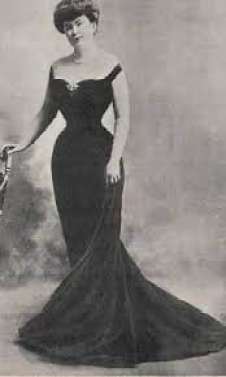 Belle Livingstone:
‘The most dangerous woman in Europe’
Belle Livingstone:
‘The most dangerous woman in Europe’
Belle Livingstone was born in rural Kansas sometime in 1875, when she was found abandoned while an infant. Named Isabel Graham, she moved with her foster parents to Chicago. In the 1890s, when her father opposed her joining a theater company, she proposed marriage to a paint salesman she just met, and then fled both her parents and new husband.
She adopted Belle Livingstone as a stage name. While in a show in New York, a publicist let it be known that Belle’s measurements matched those of the Gibson Girl, a pinup drawing idolized in the 1890s. Her photograph was published nationwide as the “ideal woman.”
A New York writer said she had “poetic legs.” She knew Teddy Roosevelt, Diamond Jim Brady, Isadora Duncan and Lily Langtry. She performed in a Broadway show that traveled to London in the early 1900s, then ran her own “salon” in Paris. For her hourglass curves, a journalist called her “the most dangerous woman in Europe.”
A self-described bohemian, Belle claimed to have had many affairs with prominent European men. She married three more times, to an Italian count, an English engineer and a wealthy Cleveland man.
In 1927, at age 52, after a long, comfortable life in Paris but with little money, Belle returned to New York. It was the Prohibition era and Belle got hooked by the secret, debaucherous clubs. Friends took her to a speakeasy hosted by Texas Guinan, a famous female speakeasy owner. Belle and Texas eventually became good friends.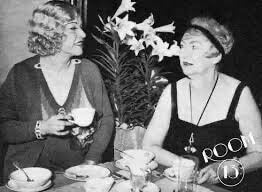
Belle hatched an idea for a “super-speakeasy” for New York’s upper crust, with a $200 annual membership. An investor, Franklin Berwin, financed it. She secured a house on East 52nd Street. It was her first speakeasy in Manhattan. But she could not meet her bills and it folded.
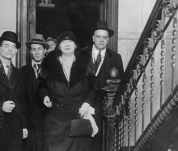 She didn’t give up that easy. In 1929, Belle started another speakeasy called the Silver Room at 384 Park Avenue, but it was soon raided by federal agents.
She didn’t give up that easy. In 1929, Belle started another speakeasy called the Silver Room at 384 Park Avenue, but it was soon raided by federal agents.
“New York’s most fashionable speak-easy was raided by Prohibition agents last night. The speak-easy was recently opened with a great flourish by Miss Belle Livingstone, a popular actress in London and New York of former days. Its furnishings are said to have cost £50,000.
A well-groomed company of four hundred men and women, drawn from the best known families in Manhattan, were surprised out of their mild revelries by the arrival of six Prohibition agents. They were engaged in dining, dancing, playing ping-pong and miniature golf when the fun started. The leader of the “dry” agents jumped on the orchestra’s platform, and, speaking in Oxonian accents, requested everybody to leave, which they did hurriedly. They then arrested Miss Belle Livingstone and six waiters.
The raid was conducted with the utmost decorum by the agents, who were described by a prominent New York society woman present as being as “gallant as old-fashioned stage coach robbers.” Irish Times
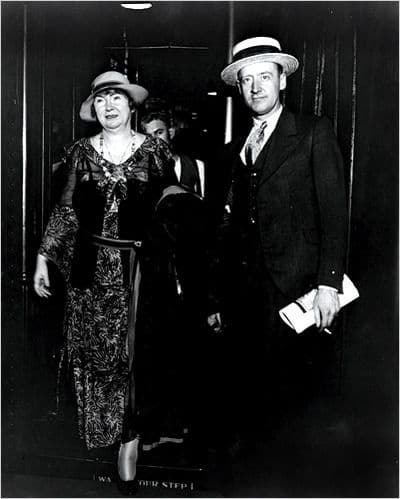
Belle being escorted out of her club by New York Prohibition officers
Taking to heart the saying that third time’s the charm, Belle founded yet another New York City club in a five-story house at 126 E. 58th Street. She asked competitor and gangster Owney Madden if opening this new club was okay with him. In her 1959 autobiography, Belle recalled his response. He said, “Lady, go as far as you like.”
Belle called her third attempted institution the Fifth-Eighth Street Country Club. It had Florentine ceilings, marble floors, an indoor mini-golf range, a pond with goldfish, game rooms, and more. Its preselected patrons were the rich and famous of the city.
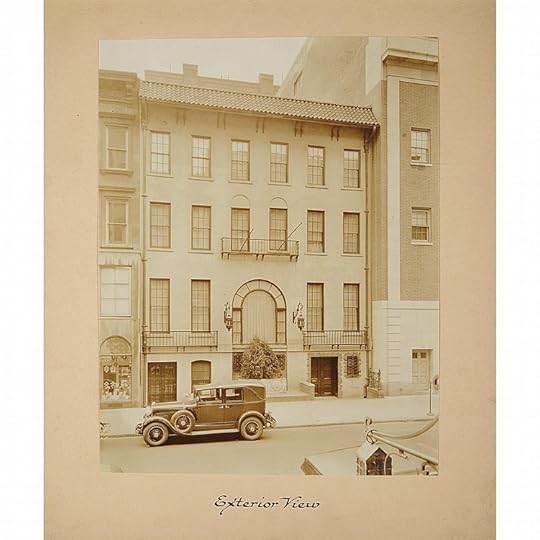 Belle dubbed her new speakeasy the Fifth-Eighth Street Country Club. Her pre-screened members included “celebrities, near-celebrities, social registries and financial barons.” It had vaulted Florentine ceilings, Italian marble floors, an indoor miniature golf range, a brook stocked with goldfish, rooms with ping pong tables and backgammon games and a lounge with a long wooden bar. Guests took off their shoes to enter an Oriental-themed room of large paintings, draperies and stain floor pillows.
Belle dubbed her new speakeasy the Fifth-Eighth Street Country Club. Her pre-screened members included “celebrities, near-celebrities, social registries and financial barons.” It had vaulted Florentine ceilings, Italian marble floors, an indoor miniature golf range, a brook stocked with goldfish, rooms with ping pong tables and backgammon games and a lounge with a long wooden bar. Guests took off their shoes to enter an Oriental-themed room of large paintings, draperies and stain floor pillows.
She sent out invitations for opening night October 25, 1930, and some surprise guests came by: Archduke Leopold from Russia, the Duke of Manchester from England and John D. Rockefeller. Others were not invited but came by anyway. A staffer ran to inform her that Chicago Mob boss Al Capone was sitting in the Monkey Room with others. “We don’t pass anyone who isn’t right” Belle quipped to Capone. He replied, “At least we’re not federals.” Madden also showed up. The group drank nonalcoholic drinks. She sent a check for $1,000 to the table to see what would happen, and the bill was fully paid, with a $100 tip for the waiter. The opening made her a bundle. A reporter for the Evening World wrote, “Can it be that Belle is going to push Texas out of the spotlight?”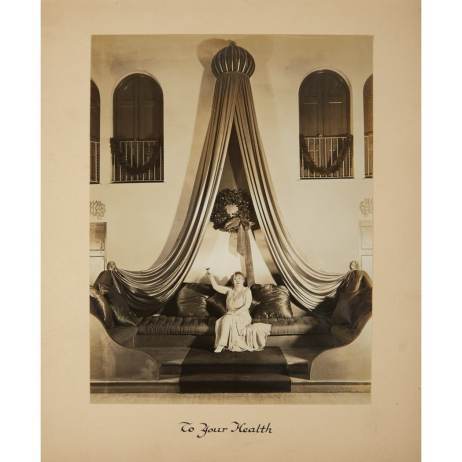
But within weeks, the feds raided her again. She famously tried to escape arrest while wearing red silk pajamas. Nabbed and charged with Volstead violations, she kept the Country Club open until January 1931, when a judge sentenced her to 30 days in New York’s Harlem jail. Once out, she used her considerable earnings to open speakeasies in Nevada, California and Texas but could not beat the local hoods at the game.
In 1933, while back in New York, she learned of Guinan’s death and helped prepare her friend’s corpse for the funeral.
Belle died in 1957. She was 82 years old. She had arranged for a monument in a graveyard in France that said, “This is the only stone I have left unturned.”
Belle Livingstone, a woman known worldwide for her beauty whose colorful journey included forays onto Broadway stages and into her own speakeasies. She crossed paths with European royals, American Industrialists and world-renowned Mobsters. Her life reflected the glamor of the roaring ‘20s and the not-so-glamorous life of starting a business, and an illicit one at that.
Other blog posts in the Hooch ‘n Hellraisers series:
Hooch ‘n HellraisersWhiskey WomenQueens of the SpeakeasiesComing soon….
Hoochie-Coochie Hooch Haulers
The post BELLE LIVINGSTONE appeared first on Sherilyn Decter.



